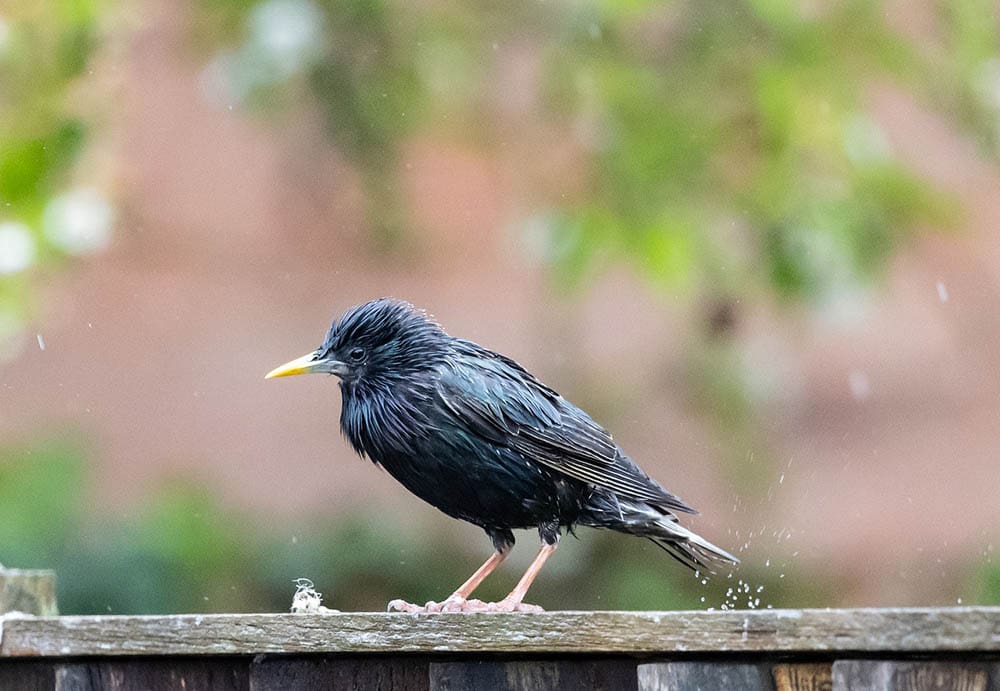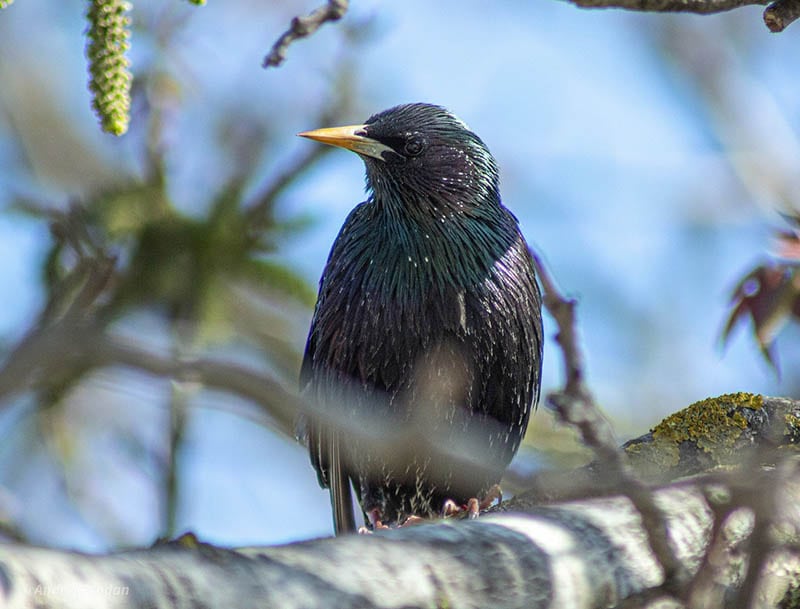3 Types of Starlings (With Pictures)
Last Updated on

Starlings belong to the Sturnidae family. These birds are native to Africa, Asia, Australia, Europe, and tropical Pacific islands, but they can be found all over the globe.
Many European and Asian varieties have been brought to North America, New Zealand, and Hawaii. In fact, Starlings are generally known as invasive species in many of these areas. Let’s look at some of the most Common Starling varieties in the US.

The 3 Types of Starlings:
1. Common or European

| Scientific Name: | Sturnus vulgaris |
| Native Range: | Eurasia |
The Common Starling is native across Eurasia, but it can be found all over the globe. It has been introduced to regions in South Africa, North America, Australia, Polynesia, and New Zealand. You are most likely to see the Common or European Starling in Europe and the United States, though they can be found in Eurasian areas as well.
In the United States, the Common Starling is primarily called the European Starling. If you are looking at a Starling in the United States, it is most likely a Common or European Starling. It is the main Starling species that is established in the country.
These birds have a metallic glossy green or purple look with pink legs. Their bill is thin but long. You can expect all Common Starlings to be spotted in the winter. They love to flock together and forage on the ground.
2. Common Hill Myna

| Scientific Name: | Gracula religiosa |
| Native Range: | South/Southeast Asia |
The Common Hill Myna is native to hill areas of South and Southeast Asia. This species can be found in the United States today, but it is considered a generally exotic species that is not truly established in the country.
It has a black, green glossed plumage with a purple-tinted head. The Common Hill Myna is unique because it is very vocal. In fact, it is known as a popular talking bird. In some areas, these birds have even been taught to repeat prayers.
3. Common Myna

| Scientific Name: | Acridotheres tristis |
| Native Range: | Asia |
The Common Myna is native to Asia. Much like the Common Hill Myna, this species can be found in the US, but it is relatively rare and considered unestablished in the country. You might find small local communities with groups of Common Myna.
If you are interested in seeing the Common Myna, you should mostly look in Asia and the Pacific. Although it is found in other locations, it is considered incredibly common in Asia and Pacific areas.
This species is similar to the Common Hill Myna, hence the similarity in name. The main difference is that Common Mynas have a slightly browner appearance and a white patch on their underside.

How Many Varieties of Starlings Are There?
Above, we only learned about 3 species of Starlings. These 3 species are the only three species that are found in the United States. Because Starlings are an old-world species, they are not native to North America.
If you look on the other side of the globe, Starlings are much more common. There are 12 official subspecies of Starlings and there are subcategories within those subspecies. In total, there are about 114 Starling species.
What Are Some Examples of Starlings Not Found in the US?

As mentioned above, there are 12 subspecies of Starlings. These subspecies are described by their native range.
- European Starling
- Faroe Starling
- Shetland Starling
- Azores Starling
- Siberian Starling
- Black Sea Starling
- Eastern Turkey Starling
- Caucasian Starling
- Central Asian Starling
- Hume’s or Afghan Starling
- Himalayan Starling
- Sindh Starling
How Did Starlings Come to the US?
Given that Starlings are an old-world species, they had to be brought by humans to North America.
It is believed that European Starlings were brought to New York in the 1890s. More specifically, it is believed that about 100 European Starlings were set free in Central Park. Experts believe that some 200 million European Starlings today came from these 100 birds.
The group that released the European Starlings did so on purpose. They wanted America to have the species that Shakespeare referenced.
Are Starlings an Invasive Species?
According to the US Department of Agriculture, European Starlings are an invasive species. They are highly territorial and make it difficult for native species to get the food and homes they need to thrive.

Conclusion
If you live in America, you’re more than likely only going to encounter the Common or European Starling. It is an invasive species that was introduced to America in the 1890s. You might be able to see a Common Hill Myna and Common Myna, too, but these are rare in the States.
You’re much more likely to see a variety of Starling species if you go to Europe, Asia, and parts of Africa or Australia. Because Starlings are old-world birds, you can find them in these areas much more easily than you would in North America.
Featured Image Credit: TheOtherKev, Pixabay
About the Author Robert Sparks
Robert’s obsession with all things optical started early in life, when his optician father would bring home prototypes for Robert to play with. Nowadays, Robert is dedicated to helping others find the right optics for their needs. His hobbies include astronomy, astrophysics, and model building. Originally from Newark, NJ, he resides in Santa Fe, New Mexico, where the nighttime skies are filled with glittering stars.
Related Articles:
Monocular vs Telescope: Differences Explained (With Pictures)
10 Types of Hummingbirds in Arkansas (With Pictures)
8 Types of Hummingbirds in Nebraska (With Pictures)
5 Types of Hummingbirds in Idaho (With Pictures)
3 Types of Hummingbirds in Mississippi (With Pictures)
8 Types of Hummingbirds in Kansas (With Pictures)
5 Types of Hummingbirds in West Virginia (With Pictures)
5 Types of Hummingbirds in Ohio (With Pictures)
